
I had just gotten to work—my father and I share a Land Surveying office in the basement of his house—to find Ol’ Grumpy Pants scrambling around the office, frantically searching for ammunition. “What’s the matter?” I inquired. “Coyote.” G.P. keeps chickens out back, and predators are a real issue. “I can’t find that box of .22 magnums anywhere!”
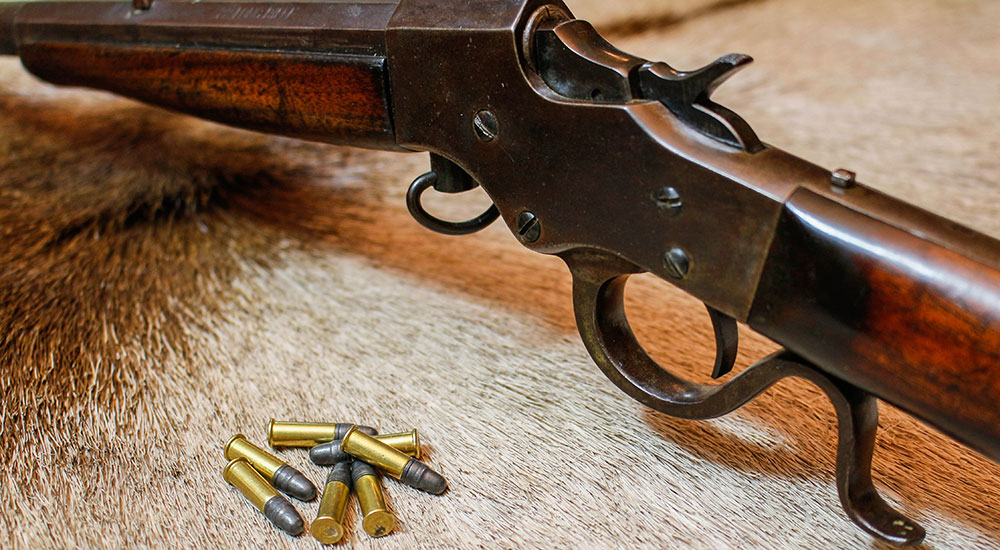
While his search for ammunition continued, I took my favorite (and only) rimfire—a Ruger Model 77/22, chambered in .22 LR, which my father had given me as a Christmas gift back in 1985—slipped out the office door, and ended that dog’s chicken eating career. I have possibly had more fun with that little .22 than any other rifle I own, as I get to take it afield more than any of the others. It has been a constant companion, taking both gray and red squirrels, cottontail rabbits and other small game, it has taken dozens of woodchucks, numerous skunks, foxes, coyotes and other furbearers as well as playing the role of target rifle while preparing for safaris. Everyone should own a good .22 Long Rifle.
Dad has championed the .22 WMR of late, having purchased a Marlin bolt rifle which he swears by—when he can find his ammunition—and appreciates the additional velocity and striking power of the bigger cartridge. With a new crop of projectiles for the classic cartridge, the effective range has been extended, as well as aiding in enhanced accuracy. Based on the great office debates, I thought it’d be interesting to pit the two cartridges against one another here, so let’s look at the similarities and differences between the two.
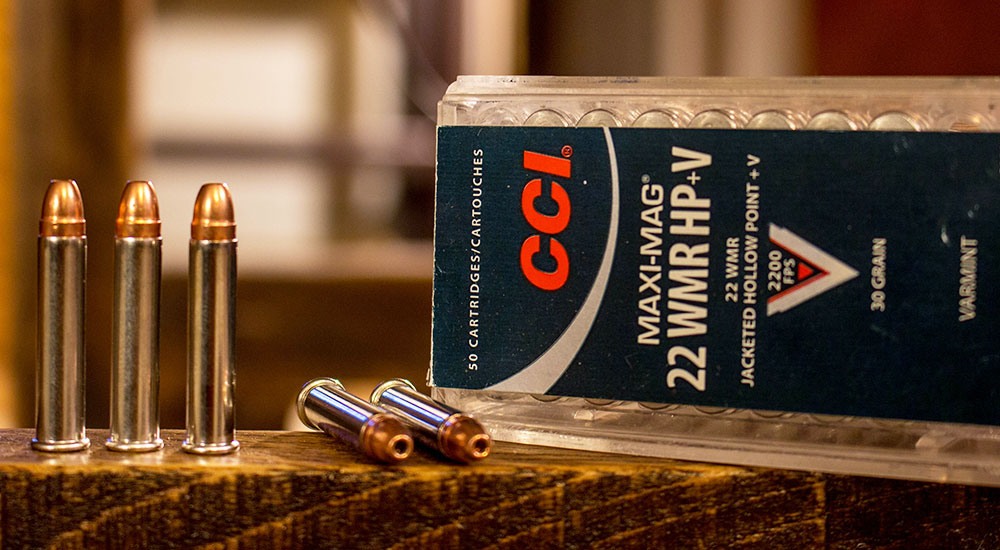
The .22 Long Rifle may very well be the most popular rifle cartridge ever invented, and really needs little introduction. Released in 1884, the cartridge we all know and love is the offspring of the case of the .22 Long cartridge with a 45-grain heeled bullet, meaning that the bullet is the same diameter as the case, and the rear portion which sits in the case steps down to a smaller diameter. With more power and a heavier bullet than either the .22 Short or .22 Long, the cartridge has been well-adapted to both rifles and handguns alike. The standard load is a 40-grain bullet at a muzzle velocity somewhere between 1150 fps and 1300 fps, depending on the rifle, and that load is wonderfully useful in teaching marksmanship—both at the target bench and in the hunting fields—to any new shooter. As I alluded to earlier, when preparing for a dangerous game hunt where I’ll be using iron-sighted big-bore rifles, I take the scope off my 77/22 and focus on my mechanics with a rimfire rifle, saving both money and my shoulder. I firmly believe that anyone who is serious about marksmanship needs to own a good .22 LR.
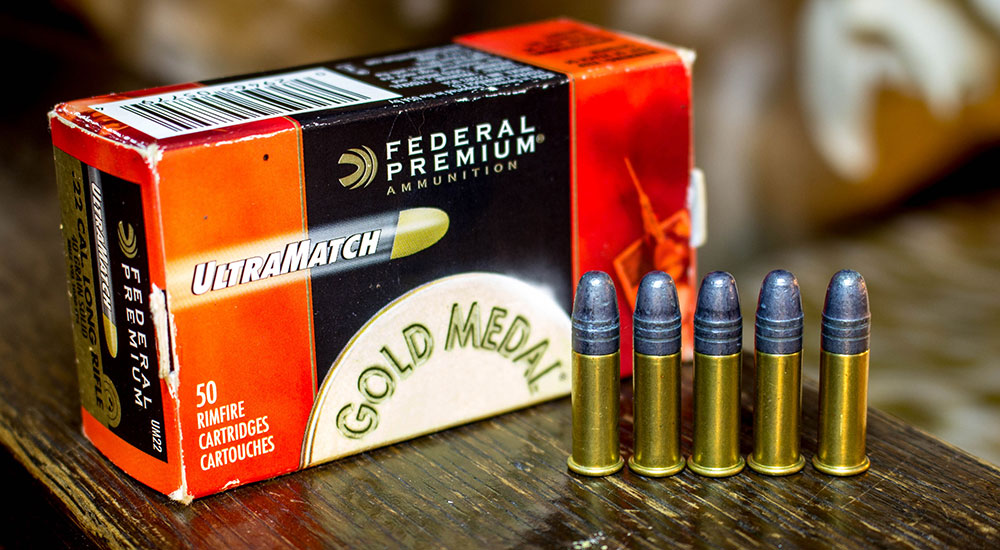
With a case measuring 0.613 inches, and an overall length of an even inch, a kid can toss a handful of .22s in his or her pocket and have a great day afield. There are variants in .22 LR loads, with subsonic variants, and some higher velocity offerings, including the famous CCI Stinger, which uses a 32-grain bullet and an elongated case to attain a muzzle velocity of 1640 fps. Because the rim and body diameters are the same, and just the case is longer, the .22 LR chamber can also handle both .22 Short and .22 Long ammunition, though there may not be enough energy to cycle the autoloaders. Bottom line: the .22 Long Rifle has stayed around since 1884 for a very good reason; it works and works well.
The famous .22 Mag—officially known as the .22 Winchester Magnum Rimfire—came onto the scene in 1959, though the first Winchester firearm produced didn’t hit the shelves until 1960. Pushing the same 40-grain bullet of the .22 Long Rifle to a muzzle velocity of just under 2000 fps, the .22 Mag quickly became a popular cartridge, as it possesses a much higher striking energy and flatter trajectory than does the .22 LR, yet a much lighter recoil and quieter report than any of the .22-caliber centerfires.
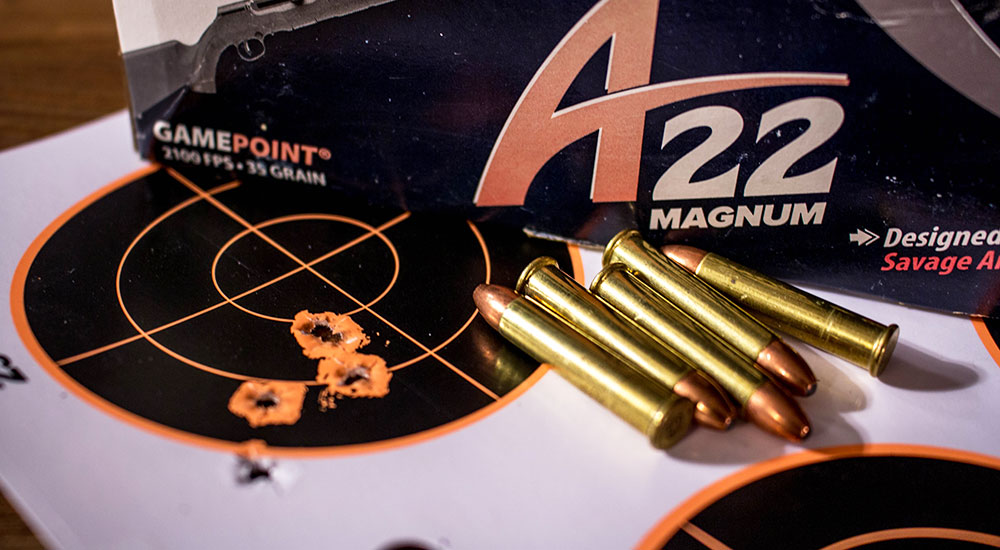
The .22 WMR uses a case of larger diameter than that of the .22 LR—0.226 inches for the .22 LR and 0.242 inches for the .22 WMR—so in spite of the fact that the bullet diameters are the same, the .22 LR cannot be fired in the .22 WMR chamber. The case of the .22 WMR measures 1.055 inches and the overall cartridge length of 1.350 inches, with a rim diameter of 0.294 inches. The velocity of the .22 Mag is certainly high enough to make it a predator round out to 100 or 125 yards, and many have referred to the cartridges as the “poacher’s choice” as the low report of the cartridge combined with the striking power have appealed to those who choose not to adhere to the game laws. Traditionally, a 40-grain round nose jacketed bullet was the projectile of choice, but of late, both Hornady and CCI have offered a polymer-tipped spitzer which has improved the cartridge’s performance. The V-Max bullet—loaded in the .22 WMR at 30 grains, moving at 2200 fps—uses a polymer tip to maintain a higher B.C. than the traditional round-nosed rimfire, affording a flatter trajectory and better retained energy. There are also heavier bullet weights—like the 50-grain Federal Game-Shok load—for those who are concerned about larger bodied coyotes.
Where the .22 Long Rifle will certainly reach out to 100, 200 and even 300 yards with some sort of accuracy, the .22 WMR does that much better. Between GP and me, we’ve used that cheap little Marlin bolt gun on warm targets out to 200 yards with surprising accuracy, especially with the CCI load that the rifle likes so much.
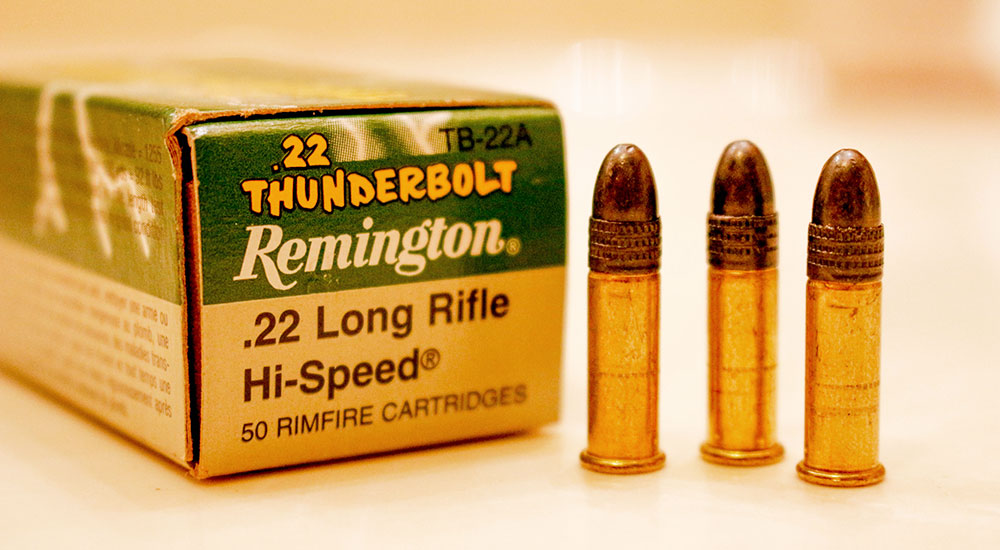
Which of the two makes the wiser choice for the hunter? Well, firstly there are many more ammunition choices for the .22 LR than there are for the .22 WMR, and with the current ammunition situation I’d feel pretty comfortable saying that you’ll see .22 Long Rifle ammo in stock before .22 WMR ammo. Secondly, the cost of .22 WMR ammunition is roughly three times that of .22 LR ammunition, so if you are any sort of high-volume shooter, the .22 LR is going to make a lot more sense. Thirdly, I've seen the .22 WMR ruin a considerable amount of meat on small game animals, much more than what the .22 LR does, so if you enjoy eating rabbits and squirrels, this is another consideration. If you are getting the idea that I’m crowning the .22 LR in this fight, you are correct.
Unless you are bent on a rimfire cartridge capable of taking larger predators out to 150 yards, you can probably get it done with an accurate .22 Long Rifle inside of 75 or 100 yards. Again, there is a reason the .22 LR has been around for over 135 years: it is a fantastic blend of all the attributes a hunter can use in a rimfire cartridge.
Looking for previous installments of our "Head to Head" series? We've got you covered.
• .30-06 Springfield vs. .300 Winchester Magnum
• .300 Wby. Mag. vs. 8mm Rem. Mag.
• 7mm Remington Magnum vs. 27 Nosler
• .257 Roberts vs. .25-06 Remington
• .300 H&H Magnum vs. .300 Winchester Magnum
• .308 Winchester vs. .338 Federal
• .222 Remington vs. .223 Remington
• .270 WSM vs. 7mm Rem. Mag.
• .22-250 Remington vs. .204 Ruger
• .25-06 Remington vs. 6.5 Creedmoor
• .444 Marlin vs. .45-70 Government
• 7x57mm Mauser vs. .280 Remington
• .300 Win. Mag. vs. .300 Wby. Mag.
• .375 Ruger vs. .375 H&H Magnum
• 7mm-08 Remington vs. .280 Remington
• .280 Remington vs. .280 Ackley Improved
• 7mm vs. .30 Caliber
• 6.5 Weatherby RPM vs. 6.5 PRC
• .338 Win. Mag. vs. .340 Wby. Mag.
• .300 RSAUM vs. .300 WSM
• .500 Jeffrey vs. .505 Gibbs
• 7mm RUM vs. .300 RUM
• .308 Winchester vs. 7mm-08 Remington
• 6.5 Creedmoor vs. .260 Remington
• .303 British vs. 8x57 Mauser
• .30-06 Springfield vs. All Other .30s
• .17 HMR vs. .17 WSM
• .450 Nitro Express vs. .470 Nitro Express
• 350 Legend vs. .35 Remington
• .280 Ackley Improved vs. 7mm Rem. Mag.
• .404 Jeffery vs. .416 Rigby
• .243 Winchester vs. 6mm Creedmoor
• .300 PRC vs. .300 Win. Mag.
• .30-06 Springfield vs. .270 Winchester
• 6.5 Creedmoor vs. 7mm-08 Remington
• 8x57 Mauser vs. .318 Westley Richards
• .358 Winchester vs. .350 Remington Magnum
• .22-250 Remington vs. .220 Swift
• .270 Winchester vs. .270 WSM
• .26 Nosler vs. 6.5-300 Weatherby Magnum
• .458 Win. Mag. vs. .458 Lott
• 7mm Rem. Mag. vs. .300 Win. Mag.
• .243 Winchester vs. 6mm Remington
• 7x57mm Mauser vs. 7mm-08 Remington
• .25-06 Remington vs. .257 Weatherby Magnum
• .338 Winchester vs. .375 H&H Magnum
• .30-30 Winchester vs. .35 Remington
• .257 Roberts vs. .250-3000 Savage
• .270 Winchester vs. .280 Remington
• .35 Whelen vs. 9.3x62mm Mauser
• .416 Rigby vs. .416 Remington Magnum
• .308 Winchester vs. .30-06 Springfield
• .22 Nosler vs. .224 Valkyrie
• .300 Win. Mag. vs. .300 WSM
• .223 Remington vs. .22-250 Remington

































